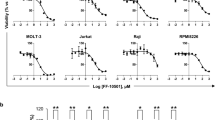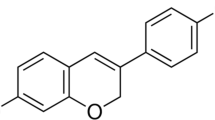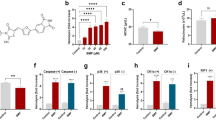Summary
BI2536 is potent inhibitor of polo-like kinases PLK1, 2, and 3. The inhibition of PLKs in nucleated cells induces apoptosis by perturbing the cell cycle with consequent engagement of mitotic catastrophe. BI2536 is being tested as chemotherapy in various phase I/II/III clinical trials. Erythrocytes do not have a nucleus; however, they may undergo programmed suicide with characteristic hallmarks including cell shrinkage and phosphatidylserine translocation to the cell surface. This particular death is baptized eryptosis. Our study explored whether BI2536 induces eryptosis. We used flow cytometry to access death in red blood cells. We analyzed the cellular volume, the intracellular calcium concentration, the cell surface phosphatidylserine exposure, and the ceramide abundance. In addition, we analyzed the effect of BI2536 on hemolysis. Our investigation showed that after 48 h of incubation with PLK inhibitor BI2536, erythrocytes lost volume and were positive for annexin‑V without any effect on hemolysis. Cells also showed an abundance of ceramide and an increase of intracellular calcium. All these finding suggest that BI2536 provokes eryptosis in red blood cells, ostensibly in part due to Ca2+ entry and ceramide accumulation.





Similar content being viewed by others
Explore related subjects
Discover the latest articles and news from researchers in related subjects, suggested using machine learning.References
Barr FA, Sillje HH, Nigg EA. Polo-like kinases and the orchestration of cell division. Nat Rev Mol Cell Biol. 2004;5:429–40.
Schmucker S, Sumara I. Molecular dynamics of PLK1 during mitosis. Mol Cell Oncol. 2014;1:e954507.
Cizmecioglu O, Warnke S, Arnold M, Duensing S, Hoffmann I. Plk2 regulated centriole duplication is dependent on its localization to the centrioles and a functional polo-box domain. Cell Cycle. 2008;7:3548–55.
Xie S, et al. Plk3 functionally links DNA damage to cell cycle arrest and apoptosis at least in part via the p53 pathway. J Biol Chem. 2001;276:43305–12.
Jemaà M, Kifagi C, Serrano SS, Massoumi R. Preferential killing of tetraploid colon cancer cells by targeting the mitotic Kinase PLK1. Cell Physiol Biochem. 2020;54:303–20.
Steegmaier M, et al. BI 2536, a potent and selective inhibitor of polo-like kinase 1, inhibits tumor growth in vivo. Curr Biol. 2007;17:316–22.
Manic G, Corradi F, Sistigu A, Siteni S, Vitale I. Molecular regulation of the spindle assembly checkpoint by kinases and phosphatases. Int Rev Cell Mol Biol. 2017;328:105–61.
Jemaà M. Mitotic spindle as therapeutic target for tetraploid cancer cells. Eurasian J Med Oncol. 2021;5(3):205–8.
D’Alessandro A, Dzieciatkowska M, Nemkov T, Hansen KC. Red blood cell proteomics update: Is there more to discover? Blood Transfus. 2017;15:182–7.
Garcia-Roa M, et al. Red blood cell storage time and transfusion: current practice, concerns and future perspectives. Blood Transfus. 2017;15:222–31.
Mairbaurl H, Weber RE. Oxygen transport by hemoglobin. Compr Physiol. 2012;2:1463–89.
Moras M, Lefevre SD, Ostuni MA. From erythroblasts to mature red blood cells: organelle clearance in mammals. Front Physiol. 2017;8:1076.
Kaestner L, Bogdanova A. Regulation of red cell life-span, erythropoiesis, senescence, and clearance. Front Physiol. 2014;5:269.
Lang E, Lang F. Triggers, inhibitors, mechanisms, and significance of eryptosis: the suicidal erythrocyte death. Biomed Res Int. 2015;2015:513518.
Foller M, Lang F. Ion transport in eryptosis, the suicidal death of erythrocytes. Front Cell Dev Biol. 2020;8:597.
Lang F, Jilani K, Lang E. Therapeutic potential of manipulating suicidal erythrocyte death. Expert Opin Ther Targets. 2015;19:1219–27.
Qadri SM, Bissinger R, Solh Z, Oldenborg PA. Eryptosis in health and disease: a paradigm shift towards understanding the (patho)physiological implications of programmed cell death of erythrocytes. Blood Rev. 2017;31:349–61.
Lang F, et al. Eryptosis, a window to systemic disease. Cell Physiol Biochem. 2008;22:373–80.
Yoshida T, Prudent M, D’Alessandro A. Red blood cell storage lesion: causes and potential clinical consequences. Blood Transfus. 2019;17:27–52.
Jemaà M, et al. Stimulation of suicidal erythrocyte death by the CDC25 inhibitor NSC-95397. Cell Physiol Biochem. 2016;40:597–607.
Fezai M, Slaymi C, Ben-Attia M, Lang F, Jemaà M. Purified lesser weever fish venom (Trachinus vipera) induces eryptosis, apoptosis and cell cycle arrest. Sci Rep. 2016;6:39288.
Jemaà M, Fezai M, Bissinger R, Lang F. Methods employed in cytofluorometric assessment of eryptosis, the suicidal erythrocyte death. Cell Physiol Biochem. 2017;43:431–44.
Lang E, Bissinger R, Gulbins E, Lang F. Ceramide in the regulation of eryptosis, the suicidal erythrocyte death. Apoptosis. 2015;20:758–67.
Lang E, Lang F. Mechanisms and pathophysiological significance of eryptosis, the suicidal erythrocyte death. Semin Cell Dev Biol. 2015;39:35–42.
Lang F, Huber SM, Szabo I, Gulbins E. Plasma membrane ion channels in suicidal cell death. Arch Biochem Biophys. 2007;462:189–94.
Lang F, Lang KS, Lang PA, Huber SM, Wieder T. Mechanisms and significance of eryptosis. Antioxid Redox Signal. 2006;8:1183–92.
Lang E, Qadri SM, Lang F. Killing me softly—suicidal erythrocyte death. Int J Biochem Cell Biol. 2012;44:1236–43.
Lang F, Bissinger R, Abed M, Artunc F. Eryptosis—the neglected cause of anemia in end stage renal disease. Kidney Blood Press Res. 2017;42:749–60.
Al Mamun Bhuyan A, et al. Inhibition of suicidal erythrocyte death by volasertib. Cell Physiol Biochem. 2017;43:1472–86.
Tischer J, Gergely F. Anti-mitotic therapies in cancer. J Cell Biol. 2019;218:10–1.
Gohda J, et al. BI-2536 and BI-6727, dual polo-like kinase/bromodomain inhibitors, effectively reactivate latent HIV‑1. Sci Rep. 2018;8:3521.
Raab CA, Raab M, Becker S, Strebhardt K. Non-mitotic functions of polo-like kinases in cancer cells. Biochim Biophys Acta Rev Cancer. 2021;1875:188467.
Acknowledgements
We are grateful to the laboratory of molecular biotechnology of eukaryotes (Sfax) and the Department of Physiology I (Tübingen) members for their support. The authors acknowledge the meticulous preparation of the manuscript by Learn & Win (https://learn2w.weebly.com).
Author information
Authors and Affiliations
Contributions
M.J. developed the concept, and designed and performed experiments. M.J., F.L., and R.M.G analyzed data and wrote the manuscript. All authors reviewed the manuscript.
Corresponding author
Ethics declarations
Conflict of interest
M. Jemaà, R. Mokdad Gargouri, and F. Lang declare that they have no competing interests.
Additional information
Publisher’s Note
Springer Nature remains neutral with regard to jurisdictional claims in published maps and institutional affiliations.
M.J. and F.L. share senior co-authorship.
Rights and permissions
About this article
Cite this article
Jemaà, M., Mokdad Gargouri, R. & Lang, F. Polo-like kinase inhibitor BI2536 induces eryptosis. Wien Med Wochenschr 173, 152–157 (2023). https://doi.org/10.1007/s10354-022-00966-7
Received:
Accepted:
Published:
Issue Date:
DOI: https://doi.org/10.1007/s10354-022-00966-7




